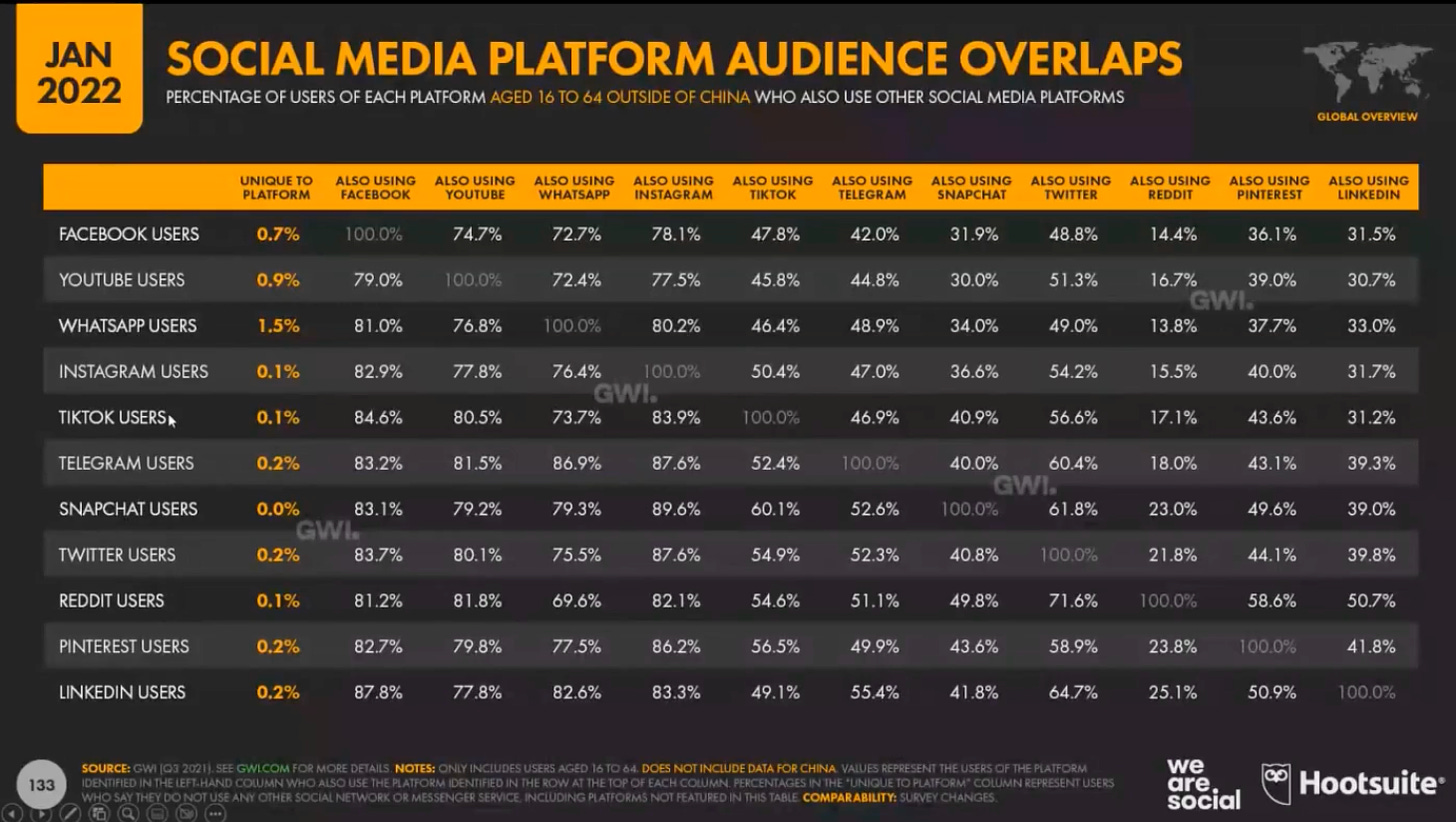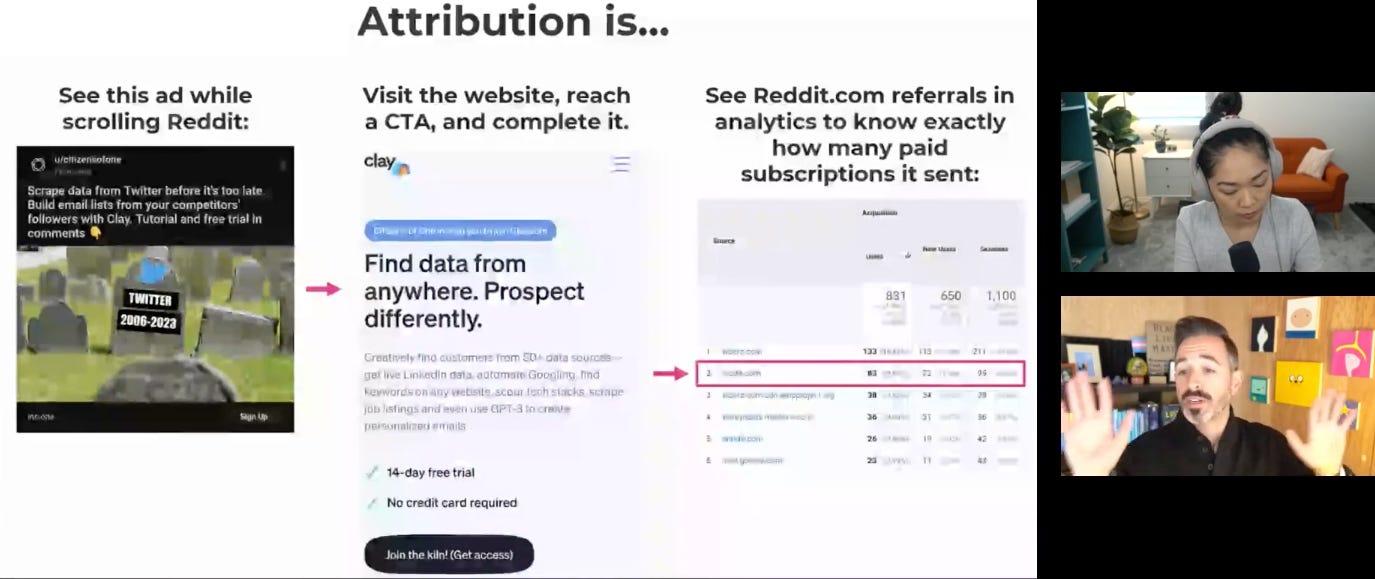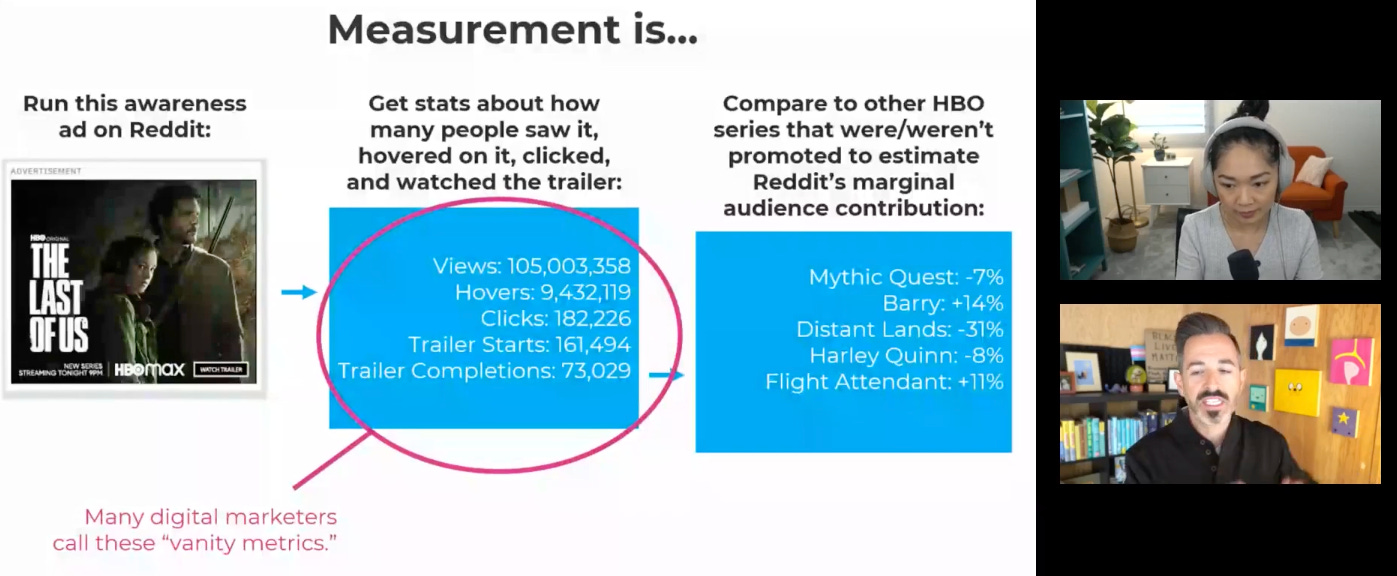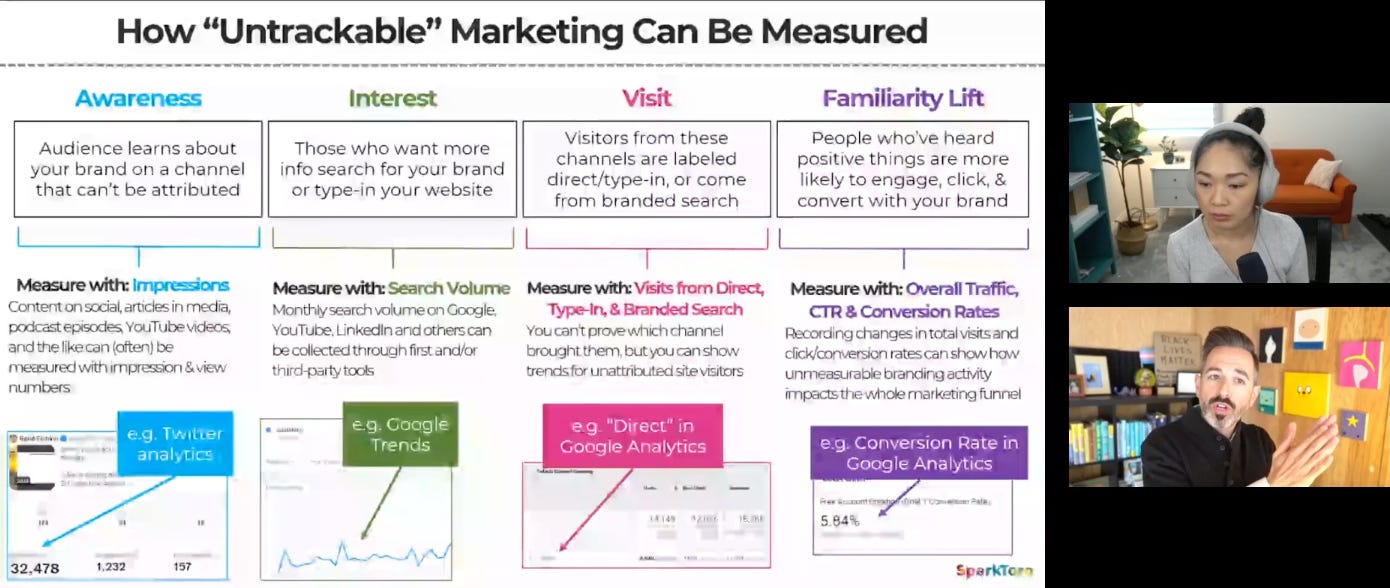The marketing industry is changing fast and the era of cookie tracking is coming to an end. With Apple's anti-tracking features and many browsers blocking third-party tracking, marketers should not try to predict the future. Instead, they need to adapt to the new realities.
The Tech industry has two options:
-
1. Create closed-loop systems with subscription models (i.e. gaming)
-
2. Create user cohorts instead of individual tracking to follow regulations
Major advertising platforms chose the second path. This led to less personalized ads because they're less trackable. Check out this NYT article about this phenomenon: https://www.nytimes.com/2023/02/11/technology/bad-digital-ads.html
Disclaimer: This article is highly inspired by a recent webinar held by Rand Fishkin (Twitter: @randfish)
With less attribution from individual tracking, eyes are also on the organic content. This makes up the majority of our attention online. But, search engines are pushing 0-click searches that increase the time spent on the search platform. The majority of our time we spend elsewhere, on social media platforms.
The average user spends around 1/3 of their time online on social media platforms. It is also fascinating to hear that the average user is active on around seven platforms. This also answers the question, "Is my audience on LinkedIn also on Twitter or YouTube?" The answer is yes, most of the time. Social media also incentivizes organic content that does not have outbound links. Posts with a link that exits the social media experience only have on average about 10% of the reach possible.

Even if you get clicks from bios or organic content that contained links, the numbers in Analytics don’t add up. This is due to an increase in hidden or missing referral strings because of the platform itself or the browser in use. Rand Fishkin estimates about 30-80% of all social referral traffic is Dark Social. What happens is that a user sees your content and starts searching for your brand name afterward or a few days later. This will show up as branded traffic or direct traffic.
So, what exactly is Dark Social? It's traffic from social media platforms, messaging apps, email, etc. that is difficult to track. If a user clicks on a link from a private message on Facebook or WhatsApp, the referral data is often missing. This makes it impossible for marketers to attribute it to a specific source.
Many clicks and conversions get attributed to direct traffic. This is not only inaccurate but also makes it difficult to optimize. Moreover, Dark Social can lead to skewed results in analytics reports. It gets challenging for marketers to understand the true impact of their campaigns and make informed decisions.

Traditional advertising methods focused on billboards, TV, radio ads, and print. Companies would often place large billboards in high-traffic areas to get their message in front of a large audience. They would also research their audience to ensure that they were placing their ads in the most effective locations. These methods lacked attribution. Companies were not able to track the effectiveness of their ads. They relied on estimates and assumptions to gauge the impact of their ads on their target audience. They were still able to analyze the potential reach, context, and comparison to get a sense of successful or failing marketing tactics.
In contrast, the modern advertising industry has shifted towards digital advertising methods. These claim to provide more accurate attribution and tracking. Companies can track and measure the impact of their ads in real-time and optimize these, as long as they can track the individual user. With this approach, companies tailor their ads to audiences based on demographics and behaviors. With the end of the cookie era, this is fading away and we need to get comfortable with measurement over attribution again.

Marketing attribution identifies which touchpoints contribute to a conversion or sale. Attribution models give credit to the touchpoints in the customer journey. This allows marketers to understand the effectiveness of their campaigns.
Last-click attribution is one of the most common attribution models used in digital marketing. The last touchpoint before converting receives all the credit for the conversion. This model is straightforward and easy to put in place. It can be misleading because it does not take into account other touchpoints that may have contributed.
Other touchpoint weighting models are available. First-click attribution, linear attribution, time-decay attribution, and more. Each model weights different touchpoints in the customer journey. This provides a more comprehensive view of the customer journey and the impact of each touchpoint on the conversion.

Marketing Measurement involves collecting and analyzing data to evaluate the performance of campaigns. We use metrics to measure impact and make data-driven decisions to optimize future campaigns. With this concept, we have to rely on vanity metrics. They refer to metrics that may look good on paper but don't provide meaningful insights into the performance of a campaign. Examples of vanity metrics include the number of likes, shares, and followers on social media. These metrics may provide a sign of brand awareness and popularity. They do not reflect the impact of a marketing campaign on business outcomes such as sales or revenue.
With missing attribution, we can use vanity metrics to calculate an uplift in brand awareness, interest, or even increases in sales. However, there is no way to connect the revenue metrics with the initial marketing asset.
Rand Fishkin proposes a framework to track marketing efforts beyond the cookie-tracking era. Instead of using statistical models that only work with very large data sets, he suggests looking at 4 metrics along the customer journey:
-
Awareness: Impressions (The audience learns about your brand on a channel that can’t be attributed)
-
Interest: Search Volume (Those who want more information search for your brand or your products)
-
Visit: Sessions from Direct & Branded Search (Bring the user to your platform)
-
Familiarity Lift: CTR & Conv. Rates (If the user likes and trusts your brand, the completion of a marketing funnel steps gets more likely)

You could also create massive test setups and create artificial calculations with hypothetical metrics... But proper testing and measurement is more expensive than wasting even large portions of your effort. Go back to the Mad Man days and watch your audience closely, using data to guide you. Study your audience and be creative.
In conclusion, the marketing industry is changing fast, and the end of cookie tracking is just one example. Instead of trying to predict the future, marketers need to adapt to new realities. Use user cohorts instead of individual tracking and focus on organic content that makes up the majority of our attention. Testing and measuring marketing campaigns are essential. Marketers should use vanity metrics to measure the uplift in performance best on testing various ideas. Focus on Measurement > Attribution. You can gain a better understanding of your audience and make better-informed decisions.